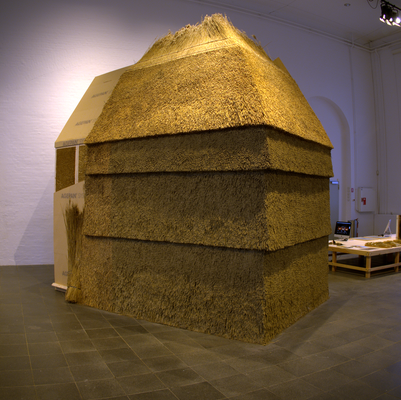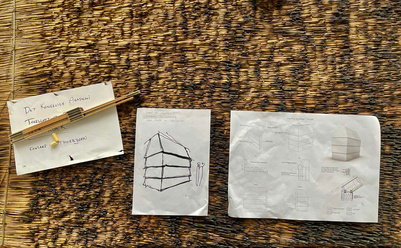It is much more climate-friendly to refurbish old buildings than to tear them down and build new ones. A new research project prepared by the Royal Danish Academy and DTU points out the necessity of incorporating life-cycle analyses and longevity into Denmark’s official Building Regulations.
The Department of Technology, Management and Economics at DTU and the Institute of Architecture and Culture at the Royal Danish Academy have joined forces to undertake a complete life-cycle analysis (LCA) at ‘Lærlingenes Hus’ (the apprentices’ building), an old half-timbered house on Bornholm from 1887.
The investigations examine the different degrees of re-insulation and refurbishment methods that can be used and compare them to the climate footprint of brand-new buildings. The project shows that the most climate-friendly way to approach old buildings is not to tear them down, but to refurbish them and, during the refurbishment, use the same materials that were originally used to construct the building.
And this can have a profound impact on the way we approach old buildings.
“Our research shows that a paradigm shift is needed in terms of our current tendency to demolish old buildings and build new ones, often from a desire to reduce the climate impact,” says Thomas Kampmann, Associate Professor. “Denmark’s Building Regulations must be changed from a one-sided focus on heat loss to give higher priority to LCA and service lives within the overall building stock.”

New LCA and architectural refurbishment proposals
The project is based on four different scenarios for which the researchers have performed LCA calculations. The results are then compared to scenarios involving brand-new buildings, either brick-built or wooden, to comply with the 2020 Building Regulations.
The project is based on four different scenarios for which the researchers have performed LCA calculations. The results are then compared to scenarios involving brand-new buildings, either brick-built or wooden, to comply with the 2020 Building Regulations.
Scenario 1: The house is refurbished as if it is listed. All the original windows, doors, beams, outer walls, etc., a number of which are already 135 years old, are repaired and restored. The house is re-insulated with primarily vapour-permeable, organic insulation materials and double-glazing using energy glass in the original windows. The walls are insulated on the inside with 75 mm of insulation material.
Scenario 1b: Like Scenario 1, but with 200 mm of insulation material on the inside and 40 mm on the exterior doors.
Scenario 1c: Like Scenario 1, but without any type of re-insulation or double glazing.
Scenario 2: The house is refurbished as if it must comply with the 2018 Building Regulations, i.e. using modern materials and techniques. It is insulated with 300 mm of mineral wool insulation on the inside, and all windows and exterior doors are replaced by new double-glazed energy panes in windows/doors made of wood/aluminium.
The lowest climate impact is achieved by Scenario 1b, closely followed by Scenario 1. Even Scenario 2 is better than both a brand-new brick-built and wooden house, whereas the highest climate impact comes from the old house without any type of re-insulation whatsoever (1c). The advantages of refurbishing over renovating become even more pronounced when the residual service life is increased from 50 years to 100 years.








